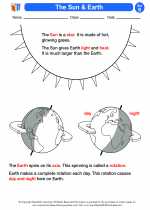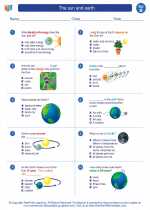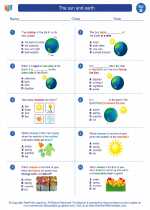Forests
A forest is a large area covered chiefly with trees and undergrowth. It is an important part of the earth’s ecosystem and supports a wide variety of plants, animals, and microorganisms. Forests play a crucial role in maintaining the balance of nature, regulating the climate, and providing habitats for numerous species.
Types of Forests
Forests can be classified into several types based on their characteristics:
- Tropical Rainforests: Found near the equator, these forests are characterized by high rainfall and high humidity. They are home to a diverse range of species and are vital in maintaining the Earth's climate.
- Temperate Forests: These forests are found in regions with moderate climate conditions and are dominated by broadleaf trees. They experience four distinct seasons.
- Boreal Forests: Also known as taiga, these forests are found in the northern hemisphere and are characterized by long, cold winters and short, mild summers. They are dominated by coniferous trees.
- Montane Forests: Found in mountainous regions, these forests are adapted to the harsh conditions of high altitudes, with cooler temperatures and thinner air.
Importance of Forests
Forests provide a wide range of ecological, economic, and social benefits, including:
- Biodiversity: Forests are home to a vast array of plants and animals, many of which are unique to these ecosystems.
- Climate Regulation: Forests play a crucial role in regulating the Earth's climate by absorbing carbon dioxide and releasing oxygen through the process of photosynthesis.
- Water Cycle: Forests help in regulating the water cycle by absorbing and releasing water, which in turn helps in preventing soil erosion and maintaining water quality.
- Wood Products: Forests are a valuable source of wood for timber, paper, and other wood-based products.
- Recreation and Tourism: Many people visit forests for recreational activities such as hiking, camping, and birdwatching, contributing to the local economy.
Threats to Forests
Despite their importance, forests are facing numerous threats, including:
- Deforestation: The clearing of forests for agriculture, urban development, and logging is a major threat to forest ecosystems.
- Climate Change: Changing weather patterns, increased temperatures, and extreme weather events can have detrimental effects on forests.
- Wildlife Extinction: Loss of habitat due to deforestation and fragmentation can lead to the extinction of many plant and animal species.
- Forest Fires: Uncontrolled forest fires can destroy large areas of forest and disrupt the ecosystem.
Study Guide
To study forests effectively, consider the following topics:
- Identify and describe the different types of forests and their characteristics.
- Explain the importance of forests in maintaining ecological balance and supporting biodiversity.
- Analyze the impact of deforestation on the environment and its consequences.
- Discuss the role of forests in mitigating climate change and regulating the water cycle.
- Examine the economic and social benefits of forests, including their role in providing wood products and promoting tourism.
- Investigate the various conservation efforts and sustainable management practices aimed at protecting forests.
◂Science Worksheets and Study Guides Second Grade. The sun and earth
Study Guide The sun and earth
The sun and earth  Activity Lesson
Activity Lesson The Sun & Earth
The Sun & Earth  Worksheet/Answer key
Worksheet/Answer key The sun and earth
The sun and earth  Worksheet/Answer key
Worksheet/Answer key The sun and earth
The sun and earth  Worksheet/Answer key
Worksheet/Answer key The sun and earth
The sun and earth  Worksheet/Answer key
Worksheet/Answer key The Sun and Earth
The Sun and Earth  Vocabulary/Answer key
Vocabulary/Answer key The sun and earth
The sun and earth 

 Activity Lesson
Activity Lesson
 Worksheet/Answer key
Worksheet/Answer key
 Worksheet/Answer key
Worksheet/Answer key
 Worksheet/Answer key
Worksheet/Answer key
 Worksheet/Answer key
Worksheet/Answer key
 Vocabulary/Answer key
Vocabulary/Answer key

The resources above cover the following skills:
Concepts of Earth Science: A student should understand and be able to apply the concepts, processes, theories, models, evidence, and systems of earth and space sciences. A student who meets the content standard should:
Develop an understanding of the cyclical changes controlled by energy from the sun and by Earth's position and motion in our solar system.